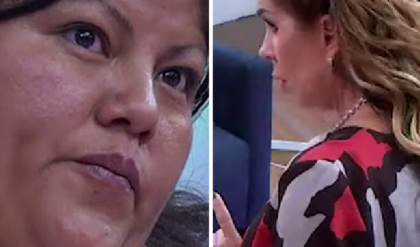Shakira ha enderezado una carrera musical que se tambaleaba, incluso estando semi-retiro. Y lo ha hecho en un tiempo récord. Sin embargo, ha habido controversia (y decepción) en torno a cómo logró un reinicio.
 Ana Soriano, de 42 años, una devota seguidora de Shakira, siente que “Shakira ha perdido su esencia. Ese artista de pop-rock que escribía letras significativas ya no existe”, lamenta. Del otro lado del debate, Sebas Álvarez, de 37 años y también fan de Shakira, opina que “es una artista que se adapta muy bien a los tiempos”.
Ana Soriano, de 42 años, una devota seguidora de Shakira, siente que “Shakira ha perdido su esencia. Ese artista de pop-rock que escribía letras significativas ya no existe”, lamenta. Del otro lado del debate, Sebas Álvarez, de 37 años y también fan de Shakira, opina que “es una artista que se adapta muy bien a los tiempos”.

Estas dos corrientes son defendidas con igual ardor por especialistas, como Pablito Wilson. Argentino, es uno de los grandes conocedores de la música latina actual y autor del libro de referencia Reggaetón: Una revolución latina. Actualmente, Wilson vive en Colombia, tierra natal de Shakira. Desde allí habla con EL PAÍS por teléfono. “Creo que hay que valorar mucho el logro de Shakira”, subraya. “Me atrevería a decir que, ahora mismo, ella es la artista más grande del mundo. Tener éxito como ella, con más de 40 años, me parece un caso sin precedentes”.
“Su evolución musical también me parece totalmente coherente. Escuchas canciones como Monotonía (2022) y te das cuenta de que Shakira ha hecho un estudio profundo para entender las redes sociales hoy en día, para entender cómo hablan los millennials, los centennials. [Ha alcanzado] un punto medio entre lo que quiere hacer y lo que funciona comercialmente”.
Casi desde el comienzo de su carrera a principios de la década de 1990, Shakira, que nació en la ciudad colombiana de Barranquilla hace 46 años—ha lanzado álbumes largos cada tres o cuatro años. El período de mayor silencio es precisamente ahora, ya que su último álbum completo, El Dorado, data de 2017. Han pasado seis años sin un nuevo álbum, y cinco años desde su última gira, en 2018. En cambio, lo que ha puesto en Las plataformas para compartir vídeos son canciones individuales, otra razón del cisma entre su base de fans.

Todo empezó con Te feliz (2022), con Rauw Alejandro. Pero alcanzó su punto máximo con la famosa Session 53 en compañía del DJ argentino Bizarrap. Continuó volando alto con sus duetos con Karol G (TQG) y Manuel Turizo (Copa vacía). En su última colaboración, El Jefe, lanzada el 20 de septiembre, adoptó el género de baladas corrido tumbado, de moda, con la banda mexicana Fuerza Regida.

A todas sus canciones más recientes les une una misma historia (su separación del exfutbolista Gerard Piqué) y una intención de abrazar los ritmos de moda del momento: reguetón, hip hop, corrido tumbado… un batiburrillo de géneros que, para simplificar, se denomina “música urbana”.

Chucky García is a Colombian journalist and music promoter. He’s interviewed Shakira twice: once when she was starting out and once when she was already a star living in Miami. “Shakira’s musical essence needs to be [properly contextualized]. She was trained as an artist in Miami, under the advice and production of Emilio and Gloria Estefan. In other words, she’s always been mainstream. She was already in Miami when she was growing up. So, there’s not much essence of, say, a Tom Waits-type [grunge] artist.”

“Shakira has always been a trendsetter,” he continues. “And I think she’s confirmed this lately. If tomorrow, for example, something called flamenco corrido tumbado suddenly becomes fashionable [in the English-speaking world], she’s going to make a song about it.”:max_bytes(150000):strip_icc():focal(723x0:725x2)/shakira-2-2000-07c39958c97747d1bc4931eee5ea4341.jpg)
That being said, García sees an important change in her latest moves “Shakira’s albums that people like the most — such as Pies descalzos (1995) or ¿Dónde están los ladrones? (1998) — have an album concept, they’re quality Latin pop-rock. What she’s doing now, musically, is embracing the most popular trends. Now, that’s certainly criticizable. She’s an artist who’s had a good, mature career, but now she’s jumping from one place to another, looking for the trend of the moment. It’s not understandable, because we’re not talking about a singer who’s starting out and needs visibility: she already has all the visibility in the world.”
 Shakira and Jennifer Lopez perform during the halftime show at the Super Bowl in Miami, in February 2020.JEFF KRAVITZ (FILMMAGIC)
Shakira and Jennifer Lopez perform during the halftime show at the Super Bowl in Miami, in February 2020.JEFF KRAVITZ (FILMMAGIC)
Shakira’s 30-year-long career can be divided and simplified into three stages: the 1990s and the early-2000s, where she polished a Latin pop-rock singer-songwriter style, with songs including Antología, Suerte (Whenever, Wherever) or Ciega, Sordomuda. Then, the second, when she began to experiment with dance genres and interact with other artists, from Alejandro Sanz to Rihanna, putting out songs such as Hips Don’t Lie, She Wolf, or the famous Waka Waka, the official theme song of the 2010 World Cup in South Africa. Her latest stage entails breakup themes and an embrace of urban music.

In all three stages of her career, Shakira has had songs at the top of the charts. And, as for live performances, the Colombian demonstrated from the beginning that she was a great stage power, praised in all forums. And, of course, we mustn’t forget her two moments of glory that were seen by millions of people on TV: the 2020 Super Bowl performance with Jennifer Lopez (considered the best musical interlude in the history of this event) and her 10-minute-long performance at the MTV Video Music Awards this past September.
It’s not the first time that Shakira deals with the topic of heartbreak in her songs. However, she’s now doing it in a more explicit way, touching on a specific person. Aïda Camprubí — a Barcelona-based music journalist specializing in new genres — tells EL PAÍS about the themes of the Colombian singer’s new songs: “She’s a woman empowering herself through spite. And that gets used against her. Women are judged a lot when we get tough, but when guys say harsh things in their lyrics, they’re not judged as much. These discourses are [normal when coming from] men, because they’re associated with toughness, masculinity, strength…”
“Women have always sung about breakups,” Camprubí notes, “but usually from a place of sorrow and abandonment. And now, they do it out of rage. And a woman singing out of rage [is very different]. It seems that [many male audiences] don’t like seeing angry women. I don’t know why we have to limit ourselves to expressing beautiful and vulnerable feelings — we can also sing about brutal feelings. It’s very uplifting.” Shakira, during a concert in 2003.STEPHANE CARDINALE – CORBIS (CORBIS VIA GETTY IMAGES)
Shakira, during a concert in 2003.STEPHANE CARDINALE – CORBIS (CORBIS VIA GETTY IMAGES)
Regarding Shakira’s collaborations with Bizarrap, Karol G, or her immersion in Mexican ballads, Camprubí points out that it’s “super normal for her to pay attention to current genres. Shakira has always tried very different things. It’s a natural phase for a restless artist like her. These aren’t lurches: she’s an evolving artist. Some may like it and some may not, but an artist deserves to go through [as many] phases as she wants.”
Pablito Wilson goes further: “Shakira has impact, legacy, and validity. She has a variety of values that I don’t see in any of the pop artists of the moment. For example, Bad Bunny lacks a legacy. Taylor Swift has a lot of impact in the United States, but not so much in Latin America. Madonna has a legacy, but she’s already lost relevance.”
Shakira’s next steps inevitably involve completing an album and, above all, going on tour. No matter how many listens her new songs get, the bulk of the money in the music industry currently comes from live performances. In her only long interview since the new phase of her career began, in Billboard magazine, the singer promises her fans that both of these things will happen in 2024. “When the year started and I got that first No. 1, then the other, back-to-back, I thought, ‘This can’t be happening to me at 46 years old.’ It was so exciting to break the mold or reinvent the paradigms.”
In 1999, Gabriel García Márquez dedicated an extensive report to his compatriot. Shakira was 22-years-old at the time and had already released four full-length albums. The Nobel Prize winner wrote: “Shakira’s music has a personal imprint that’s unlike anyone else’s. No one sings or dances like her at any age, with an innocent sensuality that seems to have been invented by her.”
Hoy en día no hay debate sobre la cantante colombiana en su país. “Hay unanimidad: ella es una heroína”, afirma el productor colombiano Chucky García. Y añade: “Para el 90% de la gente, ella es intocable. Incluso cuando pasó lo de Hacienda [en España sobre impuestos no pagados], la mayoría lo justificó. Dijeron: ‘Bueno, los españoles vinieron hace 500 años y se llevaron el oro, ¡así que ahora está bien si defraudaron al Tesoro español!’”
Al final, como acabas de leer, acabamos desviándonos de la música.
News
¡La POLÉMICA CON Mia Rubín ESTALLA! Lucerito Mijares REVELA la VERDAD: ¡NO COPIA A NADIE y SE DECLARA ÚNICA!
La Verdadera Identidad de Lucerito Mijares: Revelación Sorprendente que Divide Opiniones Introducción La reciente revelación sobre la verdadera identidad de Lucerito Mijares ha causado un gran revuelo en el mundo del espectáculo, dividiendo opiniones y desatando una serie de polémicas…
¡Bochorno Total! Lucerito Mijares Se Sonroja Frente a Lalo Capetillo al Cometer Este Error Imperdonable
Lo que sientas, lo que pienses, curiosidades y más presenta: Lucerito Mijares se sonroja frente a Lalo Capetillo por hacer mal esto. Sin duda, las risas nunca faltan en el programa “Juego de Voces”. En esta ocasión, la pregunta fue:…
¡Tensión al Máximo! Lucerito Mijares Enfrenta Dura Confrontación con su Padre, Manuel Mijares
¡Explosiva Confrontación en Vivo! Lucerito Mijares Desata Polémica al Enfrentar a su Padre, Manuel Mijares, en Plena Transmisión Nuevamente, la famosa cantante y actriz de teatro, Lucerito Mijares, se robó todos los reflectores en el programa “Juego de Voces”, donde…
LUCERITO MIJARES LO PARALIZA TODO con MENSAJE URGENTE POR ATAQUES CONTRA MIJARES Y LUCERO ¡URGENTE!
Lucerito Mijares ha dejado claro que no permitirá chistes ni ataques en contra de su madre, Lucero, su padre, Manuel Mijares, o su hermano, José Manuel. En un contundente momento, Lucerito mostró su carácter al manejar una crisis mediática cuando…
La Reacción De Eduardo Capetillo Jr Al Ver Al Amor De Su Vida En Traje D Baño, Es ¿Lucerito Mijares?
Hola, soy Carla y esto es Secretos de los Famosos. Hoy vamos a hablar sobre la reacción de Eduardo Capetillo Gaitán al ver una foto de su mamá, Vivi Gaitán, en traje de baño. Eduardo Capetillo Gaitán, el talentoso cantante…
¿Triste Por Lucerito Mijares? Lalo Capetillo Revela Como Cura Sus Penas
El reciente video de Lalo Capetillo ha dejado a muchos fans y seguidores boquiabiertos. Tras la extraordinaria química que mostró con Lucerito Mijares en el reality show *Juego de Voces*, y que provocó una ola de especulaciones sobre un posible…
End of content
No more pages to load











